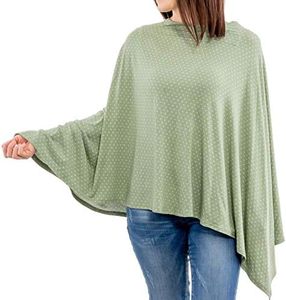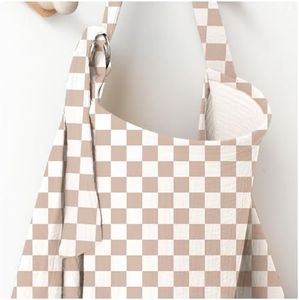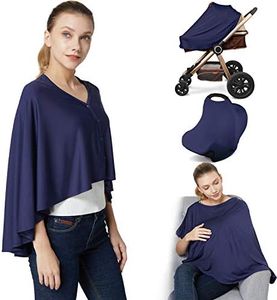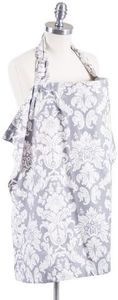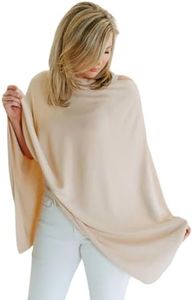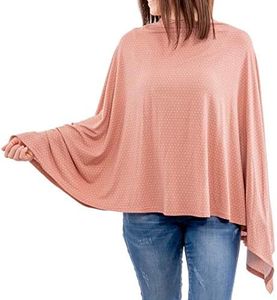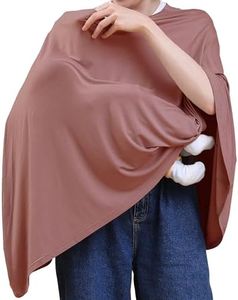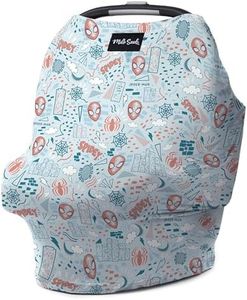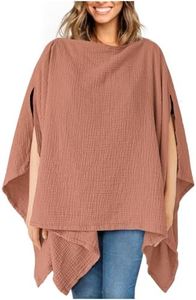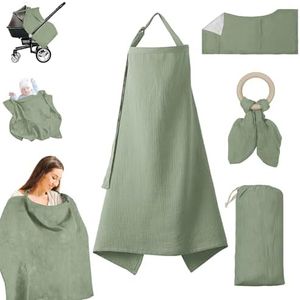We Use CookiesWe use cookies to enhance the security, performance,
functionality and for analytical and promotional activities. By continuing to browse this site you
are agreeing to our privacy policy
10 Best Nursing Covers
From leading brands and best sellers available on the web.Buying Guide for the Best Nursing Covers
Choosing the right nursing cover is all about comfort, privacy, and practicality for both you and your baby. With so many styles available, it helps to know what features matter most to your lifestyle. Start by thinking about where and how often you'll use the cover, if you prioritize discreteness, and what fabrics feel good on your skin. Keeping these factors in mind will help you narrow down the selection to those covers that make breastfeeding in public or at home feel comfortable and stress-free.MaterialThe material of a nursing cover refers to the type of fabric used. This is important because it affects breathability, softness, and how easy it is to clean. Lightweight, breathable cotton or bamboo fabrics are ideal in warm weather or for sensitive skin, while slightly thicker materials might be better in colder climates. If you have sensitive skin or a baby prone to overheating, lean towards soft, natural, and breathable fabrics. Always check if the material is machine washable for easy cleaning.
Coverage and SizeCoverage and size determine how fully the nursing cover shields you and your baby during feeding. Some covers offer full coverage for complete privacy, while others are smaller and more discreet. Large, apron-style covers give maximum privacy and are good for those who want to breastfeed discreetly in public. Smaller or poncho-style covers might be more convenient for quick feeds. Your choice should match your comfort level with public nursing and your need for movement and airflow.
AdjustabilityAdjustability refers to how well you can customize the fit of the nursing cover around your neck and shoulders. A cover with adjustable straps or flexible necklines allows you to quickly set it to the most comfortable and secure position, which can also help maintain eye contact with your baby. If you plan to use the cover often and in different positions, look for versatile fastening options or stretchy designs that adapt to your needs.
Ease of Use and PortabilityThis specification considers how quick and simple it is to put on and take off the nursing cover, as well as how easily you can carry it with you. Some covers fold up small to fit in your bag and have no-fuss designs for one-handed use, which is helpful when juggling a hungry baby. If you’re on the go or want a cover for travel, pick one that’s lightweight, compact, and hassle-free to pack.
Visibility and AirflowVisibility and airflow refer to how easily you can see your baby while nursing and how well the cover allows air to circulate. Some covers have a stiff neckline or mesh panels, letting you make eye contact and check on your baby without lifting the fabric. Good airflow is vital, especially in warmer weather, to keep your baby comfortable and prevent overheating. Choose a design that balances privacy and your need to monitor your baby, plus keeps both of you cool.
Style and DesignStyle and design involve the overall look and feel of the nursing cover, such as colors, prints, and how it matches your personal fashion. Some covers are designed to double as scarves, stroller covers, or car seat canopies, adding versatility. If you want a cover that matches your outfits or serves multiple purposes, look for stylish designs and multiuse functions. Choosing a look you enjoy can boost your confidence while feeding in public.
